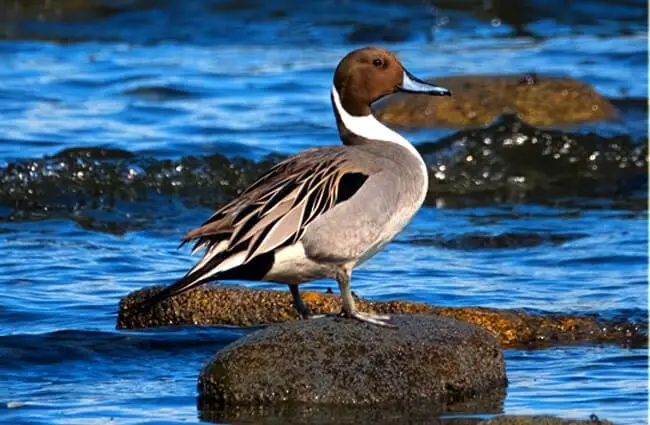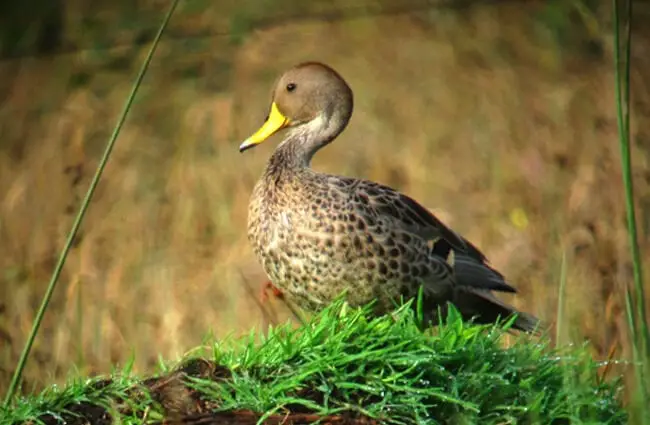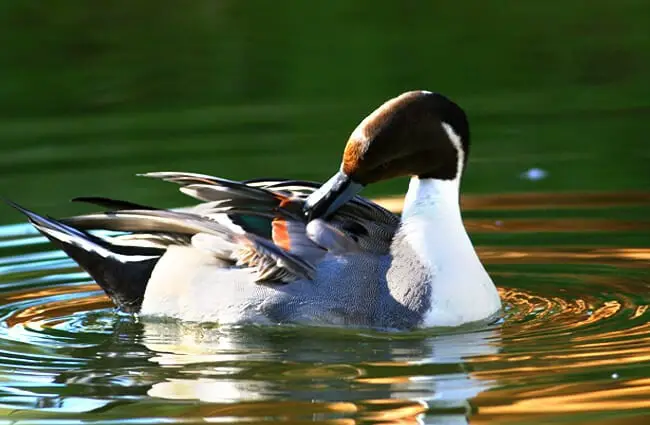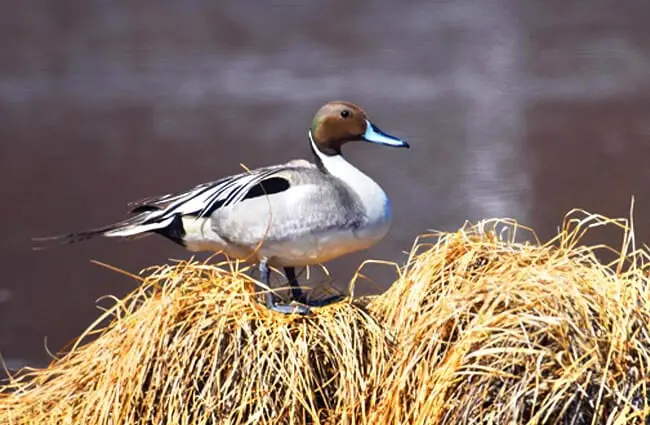Pintails, a captivating group of ducks found across the globe, represent a fascinating intersection of natural beauty and ecological importance. From their elegant silhouettes to their complex behaviors, these birds have long captured the imagination of ornithologists and nature enthusiasts alike. This comprehensive guide delves into the world of pintails, exploring their characteristics, habitat, behavior, and their role within the broader ecosystem.
What is a Pintail?
The term “pintail” refers to several duck species within the genus Anas and related genera, recognized by their distinctive elongated tail feathers. While numerous species exist, the Northern Pintail (Anas acuta) is arguably the most well‑known and widespread. This duck, characterized by its slender build and graceful movements, is a common sight in wetlands across North America, Europe, and Asia. Other notable species include the White‑cheeked Pintail (Anas leucotis) and the Yellow‑billed Pintail (Anas georgica), each adapted to specific regional environments.

Physical Characteristics
Pintails exhibit notable sexual dimorphism. Males, particularly during the breeding season, boast striking plumage. The Northern Pintail male displays a chocolate brown head and neck, a white breast, and a gray body. The namesake long, pointed tail is a defining feature. Females, in contrast, are more subtly colored, typically a mottled brown, providing camouflage during nesting. Both sexes have a blue speculum, a patch of iridescent feathers on the wing, which is useful in identification. The size varies depending on the species, but the Northern Pintail typically measures between 58 and 79 centimeters in length.
Habitat and Distribution
Pintails are remarkably adaptable, inhabiting a diverse range of wetland ecosystems. These include marshes, shallow lakes, ponds, floodplains, and coastal lagoons. The Northern Pintail, for example, breeds in the northern parts of North America, Europe, and Asia, migrating south to warmer regions for the winter. White‑cheeked Pintails are largely confined to South America, favoring wetland habitats in Argentina, Brazil, and Chile. The Yellow‑billed Pintail occupies similar habitats in South America. Understanding their preferred environments is key to spotting them in the wild.
Diet and Foraging Behavior
Pintails are omnivorous. Their diet changes with the seasons and availability of food. During the breeding season, they primarily feed on invertebrates such as insects, crustaceans, and mollusks. These provide essential protein for egg production and chick development. Outside of the breeding season, their diet shifts toward seeds, grains, and aquatic vegetation. They are “dabbling ducks,” meaning they feed by tipping forward in the water and straining food from the surface or just below. They often forage in groups, increasing their efficiency in locating food sources.

Mating and Reproduction
Pintails typically form monogamous pair bonds, often lasting for a single breeding season. Courtship displays are elaborate, involving intricate head movements, vocalizations, and preening behaviors. Males will actively defend their territory and compete for mates against rivals. Nests are usually located on the ground, concealed in vegetation near water. The female lays a clutch of 6 to 10 eggs, which incubate for around 22 to 25 days. Ducklings are precocial, meaning they are able to walk and swim shortly after hatching. They rely on their mother for protection and guidance during their first few weeks of life.
Pintails and the Ecosystem
Pintails play a crucial role in wetland ecosystems. As omnivores that feed on both plants and invertebrates, they help regulate plant and animal populations. Their foraging activities can influence vegetation structure and nutrient cycling. They are also prey for a variety of predators, including foxes, eagles, and hawks, forming an important link in the food web. The health of pintail populations serves as an indicator of overall wetland health. Conservation efforts focused on protecting and restoring wetland habitats are vital for ensuring the long‑term survival of these magnificent birds.

Pintails and Humans
Historically, pintails were heavily hunted for their meat and feathers. While hunting regulations have improved in many areas, some populations remain vulnerable. Habitat loss and degradation, due to agricultural expansion, urbanization, and water management practices, pose ongoing threats. Human activities also introduce pollutants into wetlands, impacting pintail health and reproductive success. Supporting sustainable land use practices and wetland conservation initiatives is essential for mitigating these impacts.
Spotting Pintails in the Wild
For birdwatchers hoping to observe pintails, knowing where and when to look is helpful. During migration, they can be seen in large flocks at staging areas. In breeding grounds, focus on shallow wetlands with ample vegetation. Look for their distinctive silhouette, particularly the elongated tail of the male. Patience and a good pair of binoculars are key. Remember to observe them from a distance, avoiding disturbance to their habitat and behavior.

Advanced Pintail Knowledge
Evolutionary History
The evolutionary history of pintails, like many waterfowl, is complex. Fossil records suggest that the ancestors of modern pintails emerged during the late Miocene or early Pliocene epochs. Phylogenetic studies, based on genetic data, have helped clarify the relationships between different pintail species and other waterfowl. These studies indicate that pintails are closely related to other dabbling ducks, such as mallards and teals. Understanding their evolutionary history provides insights into their adaptations and conservation needs.
Conservation Status
The conservation status of pintail species varies. The Northern Pintail is currently listed as Least Concern by the International Union for Conservation of Nature (IUCN), but populations have declined in some regions due to habitat loss and hunting pressure. The White‑cheeked Pintail is considered Near Threatened, with a declining population. The Yellow‑billed Pintail is also facing conservation challenges. Ongoing monitoring and research are essential for assessing population trends and implementing effective conservation measures.
Captive Care
For zookeepers and wildlife rehabilitators caring for pintails in captivity, providing appropriate care is crucial. This includes a spacious enclosure with access to clean water for swimming and bathing. A varied diet, consisting of waterfowl pellets, seeds, grains, and invertebrates, should be provided. Enrichment activities, such as providing floating vegetation and opportunities for foraging, can help stimulate natural behaviors. Maintaining strict biosecurity protocols is essential to prevent the spread of disease.

Interesting Pintail Facts
- Pintails are strong fliers, capable of migrating long distances.
- Males undergo a complete molt after the breeding season, losing their bright breeding plumage.
- Ducklings imprint on their mother shortly after hatching, forming a strong bond.
- Pintails use a variety of vocalizations for communication, including whistles, quacks, and grunts.
- The length of the pintail’s tail feathers can vary depending on the species and individual.

In conclusion, pintails represent a fascinating group of birds, playing an important role in wetland ecosystems and captivating observers with their elegance and behavior. By understanding their biology, ecology, and conservation needs, we can contribute to their long‑term survival and appreciate these magnificent creatures for generations to come.

![Red Angus Closeup of a beautiful Red Angus cowPhoto by: U.S. Department of Agriculture [pubic domain]https://creativecommons.org/licenses/by/2.0/](https://animals.net/wp-content/uploads/2020/03/Red-Angus-4-238x178.jpg)




![Red Angus Closeup of a beautiful Red Angus cowPhoto by: U.S. Department of Agriculture [pubic domain]https://creativecommons.org/licenses/by/2.0/](https://animals.net/wp-content/uploads/2020/03/Red-Angus-4-100x75.jpg)

